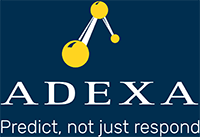Why Digital Twin of Your Supply Chain is So Critical
So many companies are turning to digitalization of their supply chain due to recent increase in supply chain disruptions. They are hoping, by having better visibility, they can respond and react faster using a digital twin of their supply chain. Most tend to deploy S&OP solutions which are not a digital twin but a distant family member of their supply chain. Almost all S&OP solutions model the supply chain at such a high level that makes it impossible to show the structure or the behavior of the supply chain accurately. Getting visibility into your options, when and if a disruption occurs, is the same as modeling the behavior of a teenager based on the character of his old uncle. A digital twin is a digital mirror. It looks and behaves like the physical world. But more importantly it changes as the physical changes. Otherwise, it is not a digital mirror. Can you imagine if your mirror showed the same image of you from 10 years ago.
The main question is why do we need an accurate model. Well, in the absence of a truthful understanding of the world, how can you make good decisions. Can you imagine a very experienced traffic cop trying to direct the traffic while blindfolded? It does not matter how much intelligence you add to the system, if the underlying model is not a true representation, then the decisions are far from optimal, and in many cases a detriment to the business. But accurate models do even more. They provide adequate data for you to predict the future and avoid issues even before they occur. An accurate model can predict the behavior of suppliers, customers, your resources and external events and show what is expected and how to act to gain a competitive advantage. Thus, making your supply chain highly resilient as well as agile.
Digitalization helps to quickly look into your choices to respond, it helps to predict the future events to be ready, minimizing the risk to the business, and it helps to plan efficiently using all the different priorities and conflicting objectives in your business. Examples of the latter are, profit, revenue, ESG factors such as carbon emission reduction and geopolitical issues as well as tariffs and taxes that can have a major impact on your bottom line. To learn more how to build a true supply chain digital twin, click Here.



